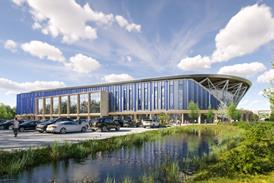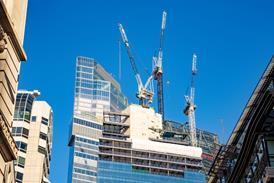This public policy behemoth must change before it strangles the life out of the planning system, writes Samuel Stafford
The mere mention of the words “green belt” raises hackles. There are some who consider its present boundaries to be sacrosanct. There are others who would do away with it all together.

Neither position is tenable, but there is a trend towards an entrenchment of these positions that makes sensible conversations about meeting housing needs almost impossible.
Housing need is an irresistible force. A 2022 report from Lichfields analysed every local authority’s brownfield register and concluded that, even if every identified site was built to its full capacity, the capacity of previously-developed land equates to one million net dwellings, which is just under a third of the 4.5 million homes that are needed over the next 15 years.
Even though 70% of the public claim to know little or nothing about the green belt, 65% of people know that it should not be built on
Green belt though is an immoveable object. According to a 2015 poll from Ipsos Mori, even though 70% of the public claim to know little or nothing about the green belt, 65% of people know that it should not be built on. It is a mainstay of local council election leaflets and Rishi Sunak, despite trailing Liz Truss in the Conservative party leadership race, saw an outright block on green belt development as a vote-winner among the party’s membership.
Obfuscation about what green belt is and is not does not help. Land is not included in the green belt for environmental, ecological or recreational reasons. The green belt does not protect special parts of the countryside.
An interchangeability in public discourse of green belt and greenfield, and misconceptions about what the green belt is for – perhaps not helped by the term “green belt” itself – is evidence of the urgent need to at least improve public knowledge and understanding of it.
Something has to be done because the green belt, long an elephant in the room, is now sucking the life out of planning. As Lichfields reported in April 2022, “a slew of local plans have been withdrawn, shelved, stalled, or are not taking on the feedback of local plan inspectors in recent weeks and months”.
Many of the delays, it was noted, particularity in the south-east of England, are linked to the vexed issue of housing needs, which ultimately, in discussions about how and where to distribute new homes, come back to green belt. As Lichfields also reported in May 2022, of the 70 local authorities that have not adopted a new local plan in the past 10 years, 74% contain green belt.
Local plans are, of course, about much more than housing numbers, which means that, for every delay, action is not being taken in other important policy areas such as employment land, transport and climate change.
Guidance could be strengthened to make clear that for every hectare of green belt that is allocated for development at least a hectare of retained green belt will be improved by way of either environmental quality or accessibility
What then it is to be done? In the short-term, it would help local authorities to get local plans adopted if the planning policy made absolutely clear that, having examined fully all other reasonable options, meeting an identified housing need does provide the exceptional circumstances required to release green belt and that land around public transport nodes could represent the most sustainable locations.
Land value can then be captured from these allocations to provide compensatory improvements elsewhere, which the national planning policy framework already makes provision for. But guidance could be strengthened to make clear that for every hectare of green belt that is allocated for development at least a hectare of retained green belt will be improved by way of either environmental quality or accessibility.
Into the longer term it is surely time to reimagine and repurpose green belts for the 21st century. The Campaign to Protect Rural England has recently published a report calling for a national land use strategy. Going further, as the UK 2070 commission identified, England does not have a spatial plan to provide a long-term framework for major infrastructure investment and development.
The green belt looms large as a public policy behemoth, but at best it is having a polarising impact on local planning and at worst it is becoming too electorally toxic to even tackle
Alongside such a plan could be a complete re-imagining of the role of green belt linked to a parallel plan for the long-term growth of cities. Such a multi-generational boundary change could identify both high quality green space and developable areas in the places that need both.
A royal commission on the future green belt, for example, might even conclude that the next century’s green belt should be called something different. As a Create Streets report concluded in 2018, most countries that have urban containment policies have processes for adjusting them or allow more of a “green wedge” or “green fingers” approach. It is a shift in thinking of this order of magnitude that is required.
The green belt looms large as a public policy behemoth, but at best it is having a polarising impact on local planning and at worst it is becoming too electorally toxic to even tackle. This is to the detriment of everybody involved in the planning system and what it is that they are seeking to achieve.
The status quo is unsustainable, both literally and figuratively.
Samuel Stafford is planning director at the Home Builders Federation
















7 Readers' comments